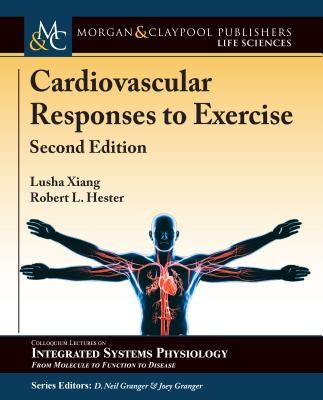
- We will send in 10–14 business days.
- Author: Lusha Xiang
- Publisher: MORGAN & CLAYPOOL
- ISBN-10: 1615047263
- ISBN-13: 9781615047260
- Format: 19.1 x 23.5 x 0.7 cm, softcover
- Language: English
- SAVE -10% with code: EXTRA
Reviews
Description
Exercise is the act of increasing metabolic rate for the purpose of enhancing physical fitness. Exercise can be one of the most stressful physiological responses that the body undertakes. With exercise, there are increases in metabolic rate, heart rate, blood flow (hyperemia), respiration, and heat production. The increased metabolic requirement during exercise is well met by an increased blood flow (functional hyperemia) and oxygen supply to the exercising tissue, which is regulated by multiple local and systemic mechanisms. The local mechanisms (factors) are responsible for mediating the muscle homeostasis and vascular conductance to match the increased metabolic requirement, whereas the systemic mechanisms are responsible for the maintenance of blood pressure and global cardiovascular homeostasis, including the increase in and redistribution of cardiac output, which is mainly mediated by sympathetic activation. For instance, the substantial decreases in vascular resistance and resultant large increase in blood flow during exercise require higher blood pressure and more cardiac output, such that the metabolically active muscle can be perfused with adequate blood flow. This book will provide an overview of the cardiovascular responses to exercise under physiological conditions as well as some pathological circumstances.
EXTRA 10 % discount with code: EXTRA
The promotion ends in 20d.06:50:02
The discount code is valid when purchasing from 10 €. Discounts do not stack.
- Author: Lusha Xiang
- Publisher: MORGAN & CLAYPOOL
- ISBN-10: 1615047263
- ISBN-13: 9781615047260
- Format: 19.1 x 23.5 x 0.7 cm, softcover
- Language: English English
Exercise is the act of increasing metabolic rate for the purpose of enhancing physical fitness. Exercise can be one of the most stressful physiological responses that the body undertakes. With exercise, there are increases in metabolic rate, heart rate, blood flow (hyperemia), respiration, and heat production. The increased metabolic requirement during exercise is well met by an increased blood flow (functional hyperemia) and oxygen supply to the exercising tissue, which is regulated by multiple local and systemic mechanisms. The local mechanisms (factors) are responsible for mediating the muscle homeostasis and vascular conductance to match the increased metabolic requirement, whereas the systemic mechanisms are responsible for the maintenance of blood pressure and global cardiovascular homeostasis, including the increase in and redistribution of cardiac output, which is mainly mediated by sympathetic activation. For instance, the substantial decreases in vascular resistance and resultant large increase in blood flow during exercise require higher blood pressure and more cardiac output, such that the metabolically active muscle can be perfused with adequate blood flow. This book will provide an overview of the cardiovascular responses to exercise under physiological conditions as well as some pathological circumstances.


Reviews